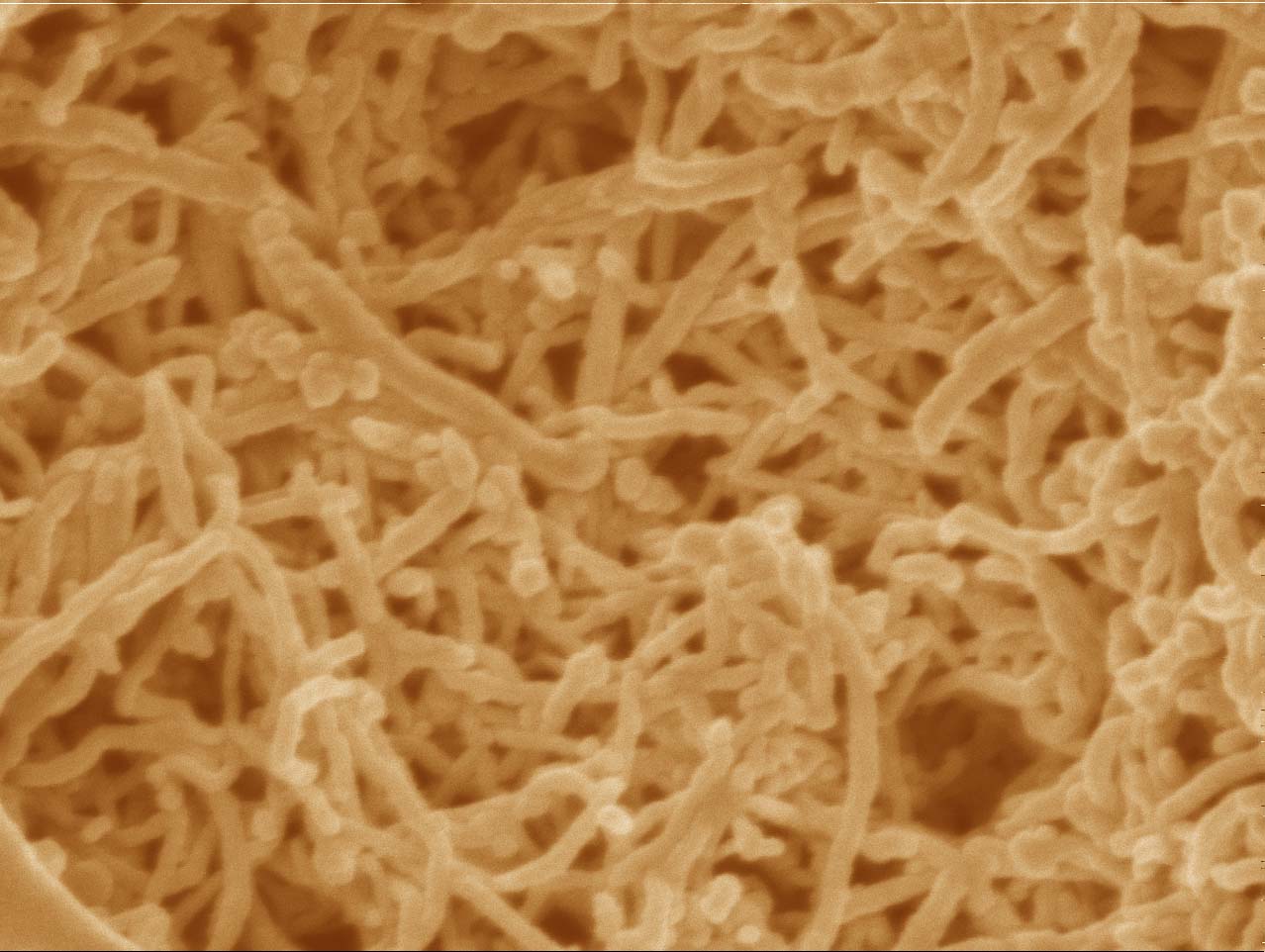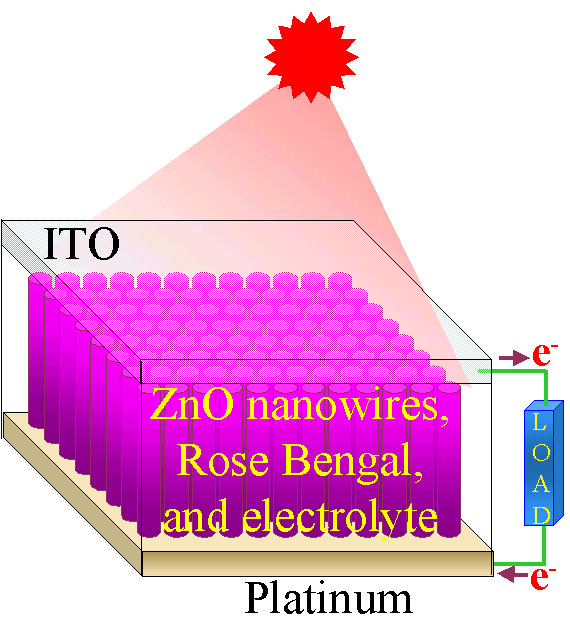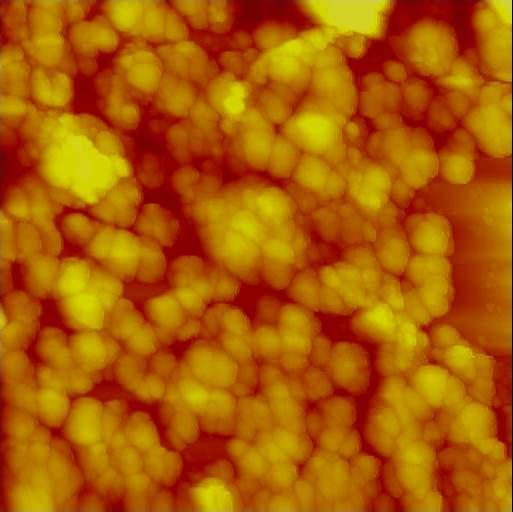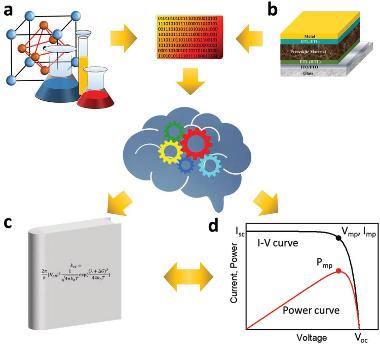
Perovskite solar cell (PSC) has emerged as one of the most promising photovoltaic technology which can challenge the traditional silicon solar cell and marching towards commercialization. There are estimates that perovskite solar panels could cost 8 times less over present silicon-based panels. Recent developments of these cells have pushed it beyond 25% within just over one decade since its inception. Appealing light absorber, long diffusion lengths, bandgap tunability are few of the upper hand of this material along with some constraints like stability and toxicity which are impeding the market commercialization of perovskite-based modules. We are trying to improve the device efficiency as well as stability. Recently we are using Machine learning an approach to find suitable materials composition for better performance as well as for the deeper understanding of the physical phenomena associated with the PSC. We are also trying to make the perovskite solar cells under ambient conditions.
Related publication
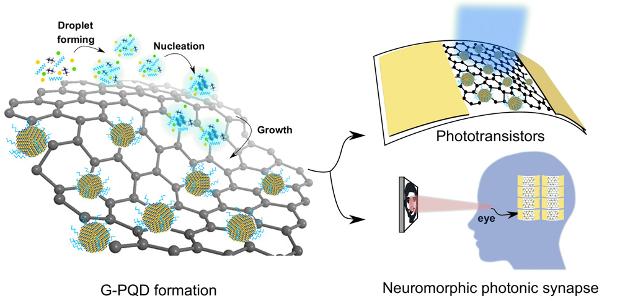
Neuromorphic or brain-inspired computing concept was first developed by Prof. Carver Mead in the late 1980s. He conceived of systems with electronic analog circuits that mimic neurological structures found in living systems; basically, computers that can simultaneously process and store large amounts of information. Neuromorphic computing has emerged as a superior platform for parallel energy efficient data processing with high accuracy and storage of information, which outperforms the von-Neumann architecture. We have developed a graphene-Perovskite quantum dot superstructure that combines efficient photogeneration and fast charge transport is currently unavailable. We have used this superstructure in neuromorphic computing application by demonstrating facial recognition with the assistance of machine learning. This can reduce the processing time as well as the energy required for processing. At some time in the future, this invention may help to make robots that can think like humans. We are still trying to improve the performance of the devices.
Related publications
Ultrasensitive and ultrathin phototransistors and photonic synapses using perovskite quantum dots grown from graphene lattice, B. Pradhan, S. Das, J. Li, F. Chowdhury, J. Cherusseri, D. Pandey, D. Dev, A. Krishnaprasad, E. Barrios, A. Towers, A. Gesquiere, L. Tetard, T. Roy, J. Thomas, Science Advances, 2020, Vol. 6, no. 7, eaay5225 (front cover page). Highlighted in Nature Electronics
Organic Solar Cells:
Organic solar cells (OSCs) have attracted great attention as a viable alternative renewable energy source due to low cost, large area processibity and compatibility with flexible substrates. As the power conversion efficiency of bulk-heterojunction (BHJ) OSC devices approaches 10 %, long term device stability becomes a major concern. We are trying to develop high efficient organic photovoltaic device beyond 10% limit. We are looking different aspects of device performances in terms of device efficiency, stability and commercially affordable low cost processing technology. We also synthesize new low band gap conjugated polymers both n and p type with well-defined optical and optoelectronic properties to fabricate high performance next generation Photovoltaic devices. We are also studying the nanoscale morphology of the active materials by tuning different parameters. Apart from that, we are trying to develop new device encapsulation technique to protect device from oxygen and humidity to achieve long lifetime. We are also trying to make device in inverted structure.
Related publications
1. Inverted organic solar cells comprising low temperature processed ZnO films, B. Pradhan*, S. Albrecht, B. Stiller, and D. Neher, Appl. Phy A 2014, 115,365.2. Organic heterojuction photovoltaic cells: role of functional groups in electron acceptor materials, B. Pradhan, and A. J. Pal, Solar Energy Materials & Solar Cells, 2004, 81, 469.
3. Molecular level control of donor-acceptor heterostructures in organic photovoltaic devices, B. Pradhan, A. Bandyopadhyay, and A. J. Pal, Appl. Phys. Lett. 2004, 85, 663.
Organic-Inorganic Hybrid Solar Cells:

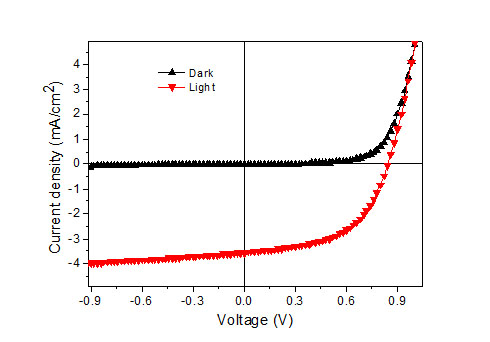
Organic–inorganic hybrid material systems are more
attractive for photovoltaic because of the potential of high throughput, solution
processes using spin cast, reel-to-reel, spray deposition, or other low cost
processes, and also offer the potential for very thin and flexible photovoltaic
devices with high energy densities. These hybrid solar cells take advantage of
the both materials properties: solution processing of polymers and high
electron mobility of inorganic semiconductors. Inorganic nanoparticles have
several advantages such as size tunability and high absorption coefficients. We
are trying to develop high efficient hybrid photovoltaic device with improving
light-harvesting, high carrier mobilities,
efficient charge separation, and high photochemical stability.
Infrared Sensors:
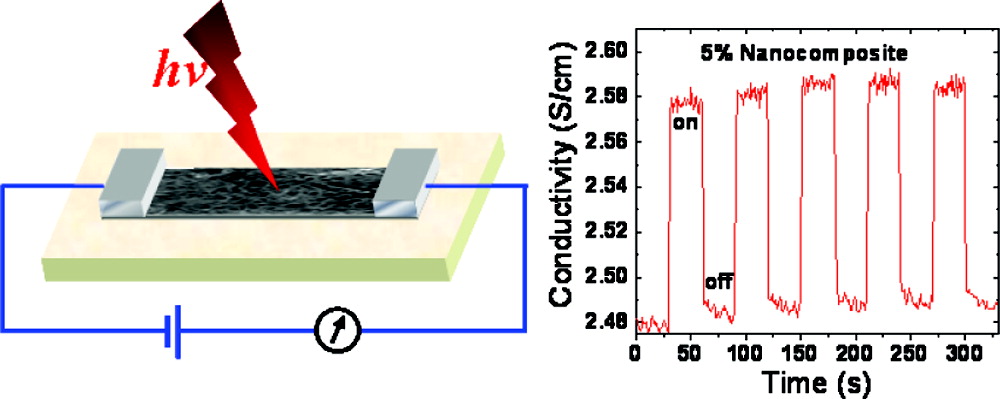
The infrared photoresponse in the electrical conductivity of single-walled carbon nanotubes (SWNTs) is dramatically enhanced by embedding SWNTs in an electrically and thermally insulating polymer matrix. The conductivity change in a 5 wt % SWNT-polycarbonate nanocomposite is significant (4.26%) and sharp upon infrared illumination in the air at room temperature. While the thermal effect predominates in the infrared photoresponse of a pure SWNT film, the photoeffect predominates in the infrared photoresponse of SWNT-polycarbonate nanocomposites. We have also demonstrated that both single-walled carbon nanotube types and nanotube-matrix polymer-nanotube (CNT-P-CNT) junctions have profound impact on electro-optical properties of SWNT/polymer composites. Composite IR sensors based on CoMoCATâ-produced SWNTs (SWNTsCoMoCAT) significantly outperform those based on HiPcoâ-produced SWNTs (SWNTsHiPco). Higher semiconducting nanotube concentration in a SWNT material is critical to enhance the photo effect of IR light on SWNT/polymer nanocomposites, whereas CNT-P-CNT junctions play a dominant role in the thermal effect of IR light on supported SWNT/polymer composite films.
Related publications
1. Carbon nanotube-polymer nanocomposite infrared sensor, B. Pradhan, K. Setyowati, H. Liu, D. H. Waldeck, and J. Chen, Nano Letters, 2008, 8, 1142.
2. Advanced carbon nanotube-polymer composite infrared sensors, B. Pradhan, R. R. Kohlmeyer, K. Setyowati, H. A. Owen, and J. Chen, Carbon, 2009, 47, 1686.
Organic Memory Devices:
We study the bistable switching and associated memory phenomenon in the different organic molecules, conducting polymers, and nanocomposites systems (e.g. functionalized carbon nanotube (CNT): conjugated polymer, ZnO: insulating polymer, etc). we are trying to investigate the conduction mechanism applicable to each of the conducting states from the current-voltage and impedance characteristics. The switching had an associated memory phenomenon and was reversible in nature. In the bistable devices, the active layer retained its high-conducting state until a reverse voltage erased it. We could “write” or “erase” a state and “read” it for many cycles for random-access memory applications.
Related publications
1. Role of new bis(2,2′-bipyridyl)(triazolopyridyl)ruthenium(II) complex in the organic bistable memory application, B. Pradhan*, and S. Das*, Chemistry of Materials, 2008, 20, 1209.
2. Electrical bistability and memory phenomenon in carbon nanotube-conjugated polymer matrices, B. Pradhan, S. K. Batabyal, and A. J. Pal, J. Phys. Chem. B, 2006, 110, 8274.
3. Electrical bistability in zinc oxide nanoparticle-polymer composites, B. Pradhan, S. K. Majee, S. K. Batabyal, and A. J. Pal, Journal of Nanosci. Nanotech. 2007, 7, 4534.
Nanowire Dye-Sensitized Solar Cell (DSSC)
We are also working in dye-sensitized solar cells (DSSCs), we are trying to use oxide nanorods instead of titanium dioxide nanoparticles. The vertical nanowires provided fast routes or channels for electron transport to the substrate electrode.
1. Vetically aligned ZnO-nanowire arrays in rose bengal-based dye sensitized solar cell, B. Pradhan, S. K. Batabyal, and A. J. Pal, Solar Energy Materials & Solar Cells, 2007, 91, 769.
2. Improved performance of cadmium sulfide-sensitized solar cells by interface engineering, A. Mahapatra, P. Kumar, B. Pradhan*, J. of Materials Science: Materials in Electronics, 2020, 31, 6274.
Use of Nanomaterials in Various Device Applications
We synthesize and characterize different class of nanostructure semiconducting materials and use these materials various electronics and optoelectronics device applications such as solar cells, photodetector, nano rectifier, gas sensing, dye sensitized solar cells and memory.
Related publications
1.Rectifying junction in a single ZnO vertical nanowire, B. Pradhan, S. K. Batabyal, and A. J. Pal, Appl. Phys. Lett. 2006
2. Conduction studies on chemical bath-deposited nanocrystalline CdS thin films, B. Pradhan, A. K. Sharma, and A. K. Ray, Journal of Crystal Growth, 2007, 304, 388.
3.A simple hybrid inorganic-polymer photodiode, B. Pradhan, A. K. Sharma, and A. K. Ray, J. Phys. D: Appl. Phys. 2009, 42, 165308 (4pp).
4. Fabrication of in-plane aligned carbon nanotube-polymer composite thin films, B. Pradhan, R. R. Kohlmeyer, and J. Chen, Carbon, 2010, 48, 217

